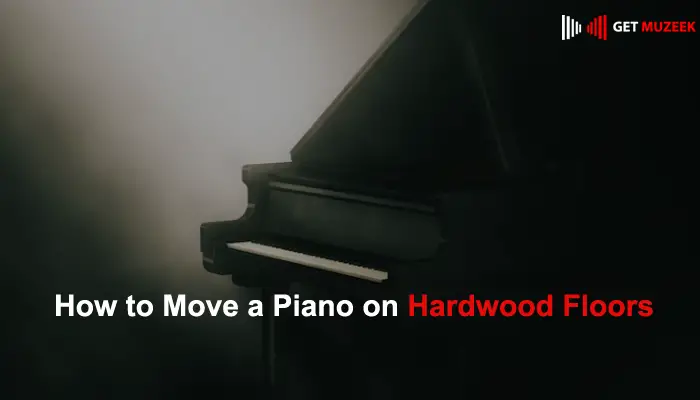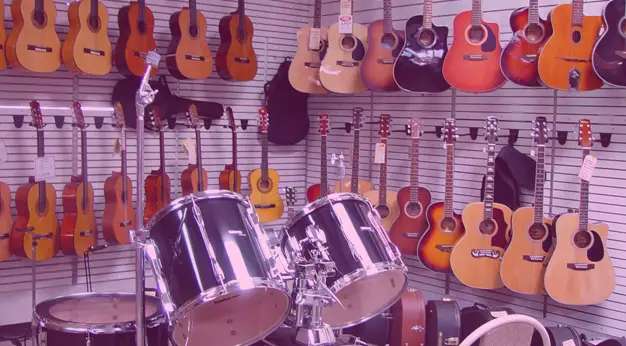
Moving a piano can be a daunting task, especially when you have to maneuver it on hardwood floors. Hardwood floors are delicate and can be easily scratched or damaged if proper precautions are not taken.
In this guide, we will explore the best practices and techniques for moving a piano on hardwood floors. From preparation to execution, we will provide you with valuable tips to ensure a safe and successful piano move.
Why is Moving a Piano on Hardwood Floors Challenging?
Moving a piano on hardwood floors presents unique challenges due to the weight and size of the instrument, combined with the delicate nature of the flooring.
The sheer weight of a piano can easily cause scratches, dents, or even structural damage to the hardwood surface. The smooth surface of hardwood floors also poses a risk of the piano sliding or losing stability during the move. Therefore, it is crucial to take proper precautions and use the correct techniques to ensure the safety of both the piano and the flooring.
Preparing for the Move
Gather the Right Tools and Equipment
Before you start moving the piano, it is essential to gather the necessary tools and equipment. Here are some items you will need:
- Heavy-duty furniture straps
- Protective blankets or moving pads
- Furniture sliders
- Piano dolly or four-wheel appliance dolly
- Moving straps or ropes
Having these tools readily available will make the moving process smoother and more efficient. It is crucial to invest in high-quality equipment to ensure the safety of the piano and your hardwood floors.
Measure the Piano and the Pathway
Measuring the piano and the pathway it will be moving through is crucial to avoid any potential obstacles. Measure the height, width, and depth of the piano, including the legs and any protruding parts. Then, measure the doorways, hallways, and staircases that the piano will need to pass through. Ensure that the measurements are accurate to prevent any difficulties or damage during the move.
Protecting the Hardwood Floors
To protect your hardwood floors during the piano move, it is essential to take proactive steps. Here are some methods you can employ:
- Use Furniture Sliders: Place furniture sliders under the piano legs to minimize direct contact with the floor. Sliders provide a smooth surface for the piano to glide across, reducing the risk of scratches and scuffs.
- Lay Protective Blankets or Moving Pads: Lay down protective blankets or moving pads along the pathway to provide an extra layer of cushioning and prevent any accidental damage to the floor.
- Remove Rugs or Carpets: Clear the pathway of any rugs or carpets that could pose a tripping hazard or interfere with the piano’s movement.
By implementing these protective measures, you can significantly reduce the chances of damage to your beautiful hardwood floors.
Getting Help and Ensuring Safety
Recruit Strong and Reliable Helpers
Moving a piano is not a one-person job. It requires a team of strong and reliable individuals to ensure a safe and successful move. Enlist the help of friends or family members who have experience with heavy lifting or consider hiring professional piano movers. Having an extra set of hands will not only make the task easier but also reduce the risk of accidents or injuries.
Communicate and Plan the Route
Communication is key when moving a piano on hardwood floors. Before you begin the move, gather your helpers and discuss the best route for transporting the piano. Identify any potential obstacles, such as narrow doorways or tight corners, and come up with a plan to navigate through them safely. Clear any furniture or decorative items that may obstruct the path, ensuring a smooth passage for the piano.
Use Proper Lifting Techniques
When lifting the piano, it is crucial to use proper lifting techniques to avoid strain or injury. Here are some guidelines to follow:
- Bend your knees: Instead of bending your back, bend your knees and keep your back straight. This will help distribute the weight evenly and reduce the strain on your back muscles.
- Lift with your legs: Use the strength of your legs to lift the piano, rather than relying solely on your upper body strength.
- Maintain a firm grip: Ensure that you have a secure grip on the piano, using furniture straps or gloves if necessary.
- Move slowly and steadily: Avoid sudden movements or jerks while lifting the piano. Move slowly and steadily to maintain control and balance throughout the process.
By adhering to these lifting techniques, you can minimize the risk of injuries and safely transport the piano across your hardwood floors.
Moving the Piano
Lift with Care
When lifting the piano, it is crucial to approach the task with care and precision. Follow these steps to lift the piano safely:
- Secure the piano: Use furniture straps or ropes to secure the piano and prevent any parts from shifting during the move.
- Coordinate with your helpers: Ensure that everyone is ready and understands their role in the lifting process.
- Lift the piano: Lift the piano using the proper lifting technique discussed earlier, keeping it balanced and stable throughout the process.
- Move slowly and steadily: Walk slowly and smoothly while carrying the piano, keeping an eye on the pathway and your surroundings.
By lifting the piano with care, you can minimize the risk of accidents or damage to your hardwood floors.
Use Furniture Sliders
Furniture sliders are an invaluable tool when moving a piano on hardwood floors. Here’s how you can use them effectively:
- Place the sliders: Position the furniture sliders under the piano legs, ensuring that each leg is supported.
- Test the movement: Gently push the piano to test the movement. If it glides smoothly, you can proceed with moving the piano. If there is resistance or the sliders are not functioning properly, readjust them or consider alternative methods.
- Guide the piano: While the sliders provide a smooth surface for the piano to slide on, you still need to guide and control its movement. Avoid excessive force or sudden movements, as they can lead to instability or damage.
Furniture sliders make the task of moving a piano on hardwood floors much easier, but it’s important to exercise caution and control throughout the process.
Consider Disassembling if Necessary
In some cases, disassembling the piano may be necessary to facilitate the move on hardwood floors. Disassembling can help reduce the overall weight and size of the piano, making it easier to transport and maneuver. However, disassembling a piano requires expertise and specialized knowledge. If you are not confident in your ability to disassemble and reassemble the piano correctly, it is best to consult a professional piano technician or mover to ensure the piano remains in optimal condition.
Frequently Ask Questions
Can I move a piano by myself?
Moving a piano by yourself is not recommended due to the size, weight, and delicate nature of the instrument. It is best to enlist the help of strong and experienced individuals or hire professional piano movers to ensure a safe and successful move.
How much does professional piano moving cost?
The cost of professional piano moving varies depending on factors such as the distance, the complexity of the move, and additional services required. It is advisable to contact several piano moving companies and request quotes to compare prices and services.
Do I need to hire piano movers?
While it is possible to move a piano without professional help, hiring piano movers is highly recommended. Professional movers have the expertise, equipment, and experience to handle the intricacies of moving a piano, minimizing the risk of damage to both the instrument and your hardwood floors.
Should I remove the piano legs before moving?
Removing the piano legs can make the instrument lighter and more manageable to move. However, it is crucial to consult the piano manufacturer’s guidelines or seek professional advice before attempting to remove the legs. Improper removal or reinstallation of the legs can cause damage to the piano’s structure.
Can I slide the piano on a blanket?
Sliding a piano directly on a blanket is not recommended, as it can cause friction and potentially damage the hardwood floors. It is best to use furniture sliders specifically designed for moving heavy items on hardwood surfaces.
What if my piano doesn’t fit through the doorway?
If your piano doesn’t fit through a doorway, consult professional piano movers or a piano technician. They can assess the situation and provide guidance on the best course of action, which may include disassembling the piano or finding an alternative exit route.
Conclusion
Moving a piano on hardwood floors requires careful planning, proper techniques, and the right equipment. By following the guidelines in this guide, you can ensure a safe and successful piano move without causing any damage to your precious hardwood floors.
Remember to gather the necessary tools, protect the floors, recruit reliable helpers, and use proper lifting techniques. If needed, consider disassembling the piano with professional assistance. By taking the necessary precautions and investing the time and effort into a well-executed move, you can enjoy your beautifully transported piano in its new location.
Related Posts:
- How to Play G on the Piano
- How to Play Wake Me up Avicii Guitar Chords
- How to Play Hallelujah Chords Guitar: A Comprehensive Guide
- How to Play Eight Days a Week Chords
- How to Play Taylor Swift “You Belong With Me” Chords



